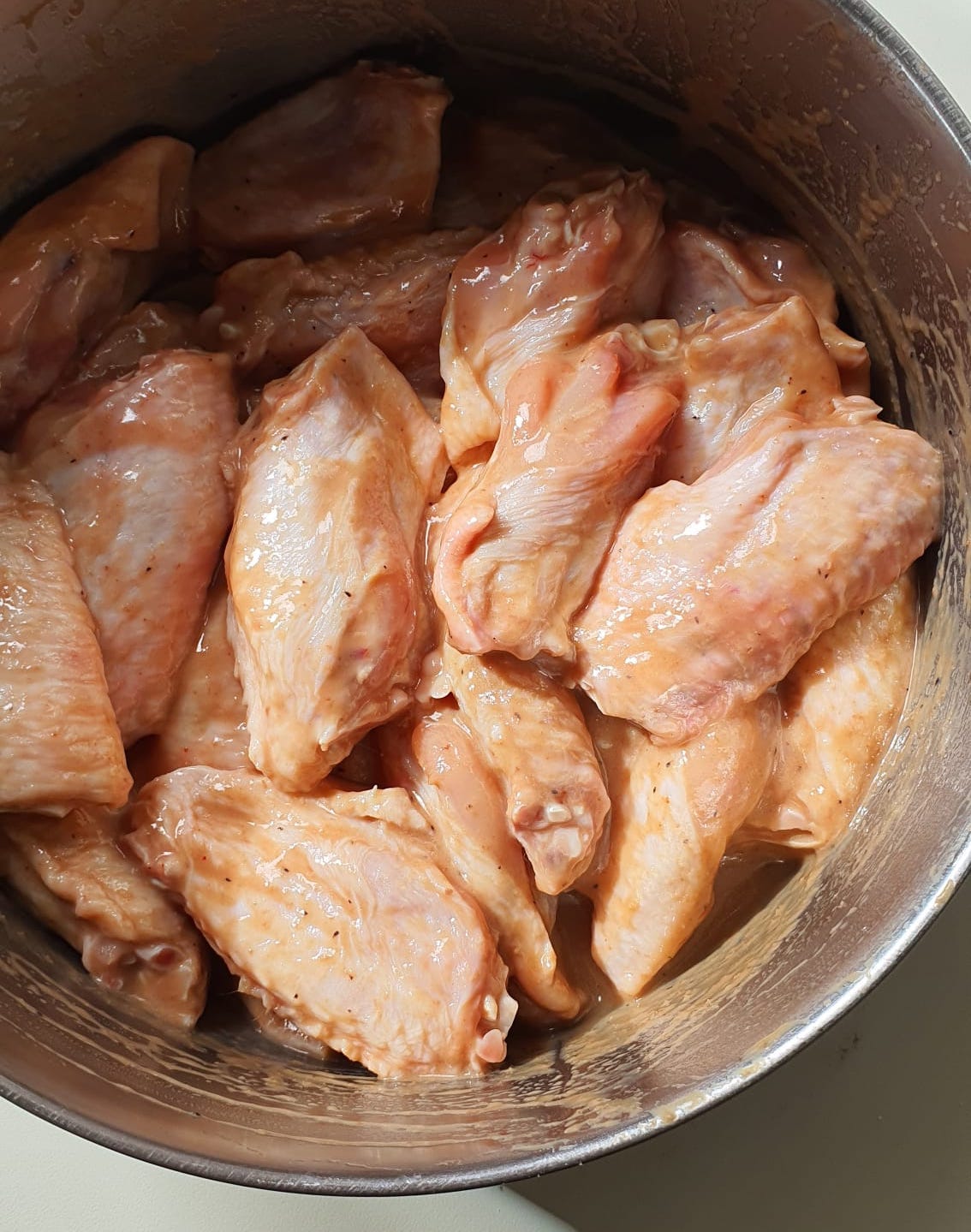When people talk about Singaporean food, they almost always refer to hawker food. Dishes like chicken rice, laksa and nasi lemak are must-eats for many tourists, however, there is a whole side to Singaporean food that is relatively unknown and inaccessible to non-locals - tze char.
The name “tze char” translates to “cook and stir-fry” and refers to a genre of food centred around the wok. Since the use of a high-powered stove characterises this type of food, dishes often land on the table in quick succession. As much as speed is a feature of the experience, the food is intensely savoury, designed to pair well with beer. And when you think of drinking food, you can’t do much better than harjeonggai or chicken wings that are marinated in shrimp sauce, coated in batter and deep-fried.
The marinade
We Asians love funk and fermented shrimp abounds throughout the region, going by different names - bagoong in the Philippines, gapi in Thailand, mam tom in Vietnam just to name a few. In Singapore, there are three main fermented shrimp products. The first and most ubiquitous is belacan, sold in grey blocks which smell innocuous when raw. However, when shaved off the block with a knife and toasted until dry and powdery, the pungent fragrance often turns so intense that a little goes a long way in curries. Next in line in hae ko (literally “shrimp paste”). You’ll see it when you order a bowl of assam laksa, where it sits on a porcelain spoon floated atop of the noodles, thick and dark as treacle. It is also key to rojak, probably Singapore’s most eaten salad.
Then you have harjeong (“shrimp sauce” in Cantonese), a wet greyish paste often used by the Cantonese as a marinade for steamed pork or seasoning paste in stir-fries. Lee Kum Kee is perhaps the most famous Singaporean brand for this, and the product goes by the name “fine shrimp sauce”. However, I’ve found that in the Netherlands, while Lee Kum Kee’s other offerings are relatively easy to source, shrimp sauce poses a challenge. It is far easier to find Thai gapi, which has a firmer texture like mouldable clay and is very similar in terms of flavour and colour. When thinned out with a little liquid, it is a fine substitute.
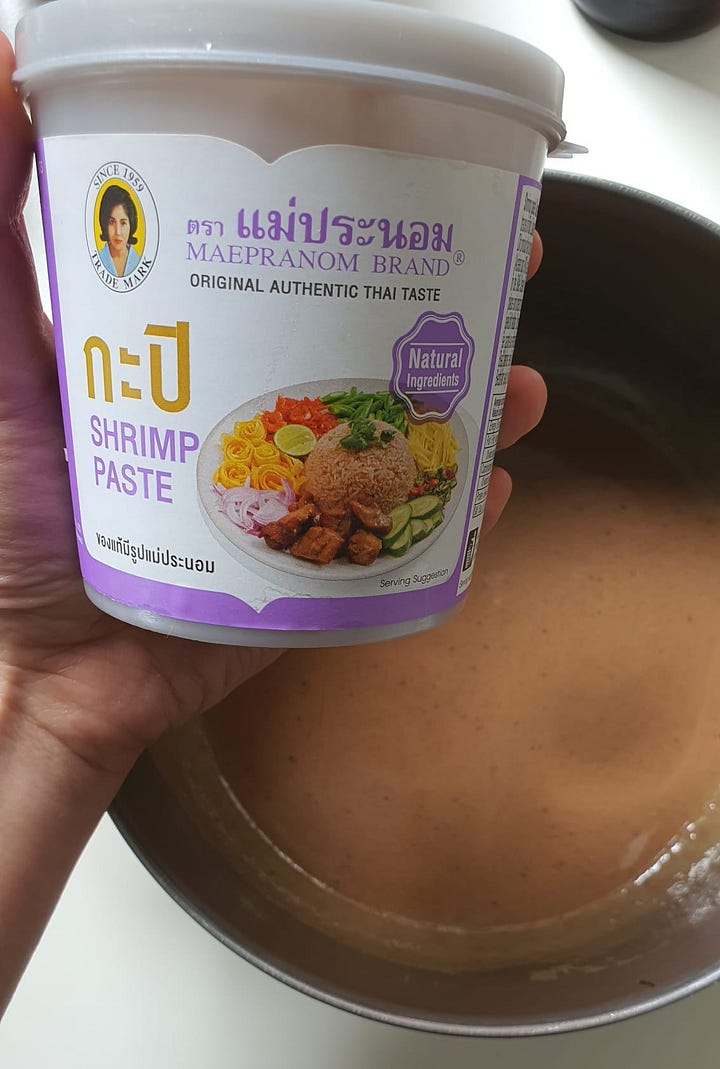
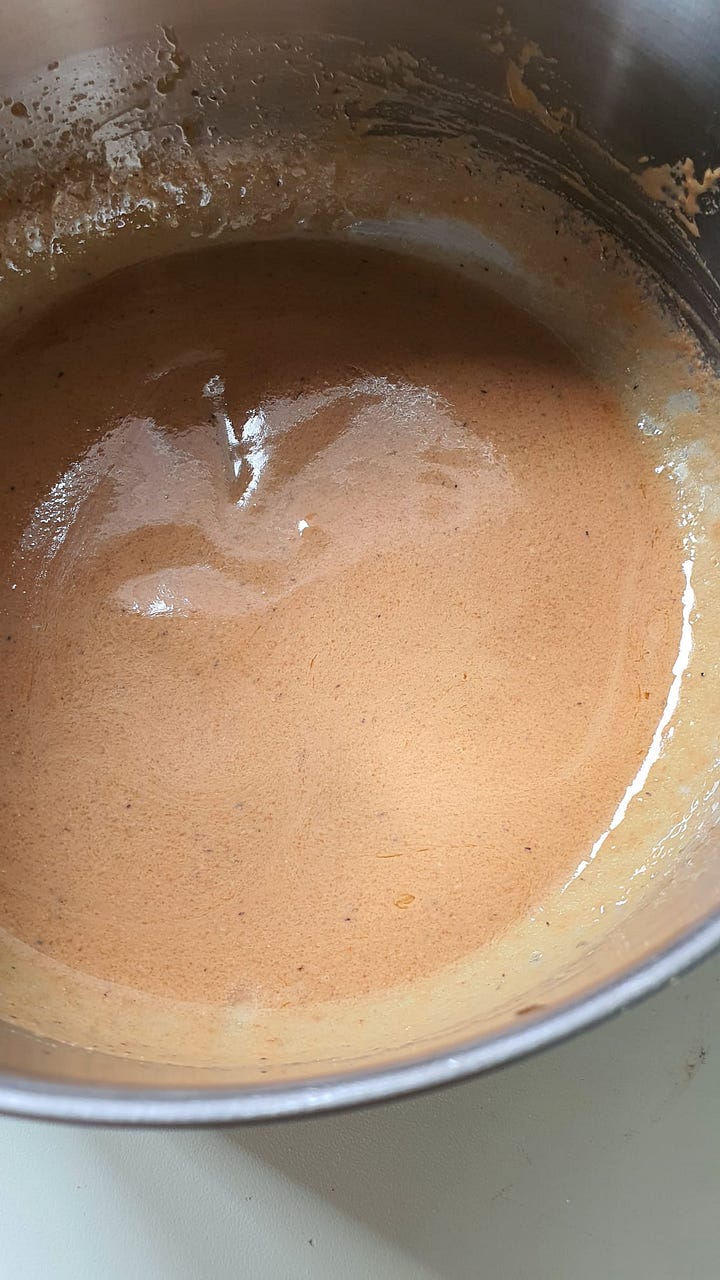
Given that harjeong is an intensely flavourful ingredient, the marinade for harjeonggai does not require much else. I use a mix of oyster sauce, sesame oil, Shaoxing wine and shrimp paste, and marinate the chicken overnight.
The crust
Apart from the fermented shrimp paste, what sets harjeonggai apart is its crust. In the West, a more substantial crust is favoured. Think Southern fried chicken, where each chicken is coated in a craggy curst. This is done by dredging the chicken in seasoned flour. In Asia, however, it is far more common to use starch when preparing fried chicken. Karaage chicken from Japan, for example, involves dredging chicken in potato starch. The difference between a flour-dredge and a starch-dredge lies in the presence of protein or a lack thereof. Wheat flour contains proteins that form gluten when combined with water. When fried, you get a robust, crunchy crust. Starches, on the other hand, have no protein and what you get is a light, super crisp crust instead. Harjeonggai uses a mix of both - a happy in-between.
However, unlike Southern fried chicken or karaage chicken, harjeonggai uses a batter rather than a flour dredge. Like Korean fried chicken, the chicken is dipped into a batter then fried. What this does is encase the chicken in an eggshell-thin, crisp crust. A key difference, however, is the presence of egg in harjeonggai batter, which brings it closer to tempura, which traditionally is made of a mix of flour and starch, water and egg. Harjeonggai batter is way thicker and egg-rich than tempura batter, and this inches harjeonggai batter closer to a velveting mixture. In velveting, meat or fish is combined with a little cornflour and egg to form a thick batter that coats the protein. The protein is then “poached” in barely hot oil; this forms a silky, slippery coating that is coveted in stir-fries. When the same slurry-coated meat is deep-fried, the protein networks in the batter harden and brown, leaving a dried crust.
Experiments
I wanted to see how the thickness of the batter would impact the crust. I started out with a standard recipe that uses a mixture of plain flour and potato starch. It was a rather loose batter. The chicken wings turned out great on the whole, but browned incredibly quickly in the hot oil, too fast for my liking. The thin crust had a glassy crispness to it, which was nice, but could benefit from being more substantial.


Curious to see how the chicken wings would turn out with a thicker batter, I added more of the potato flour and plain flour mix. It turned out better, with a not-too-thin crust that stayed crunchy longer.

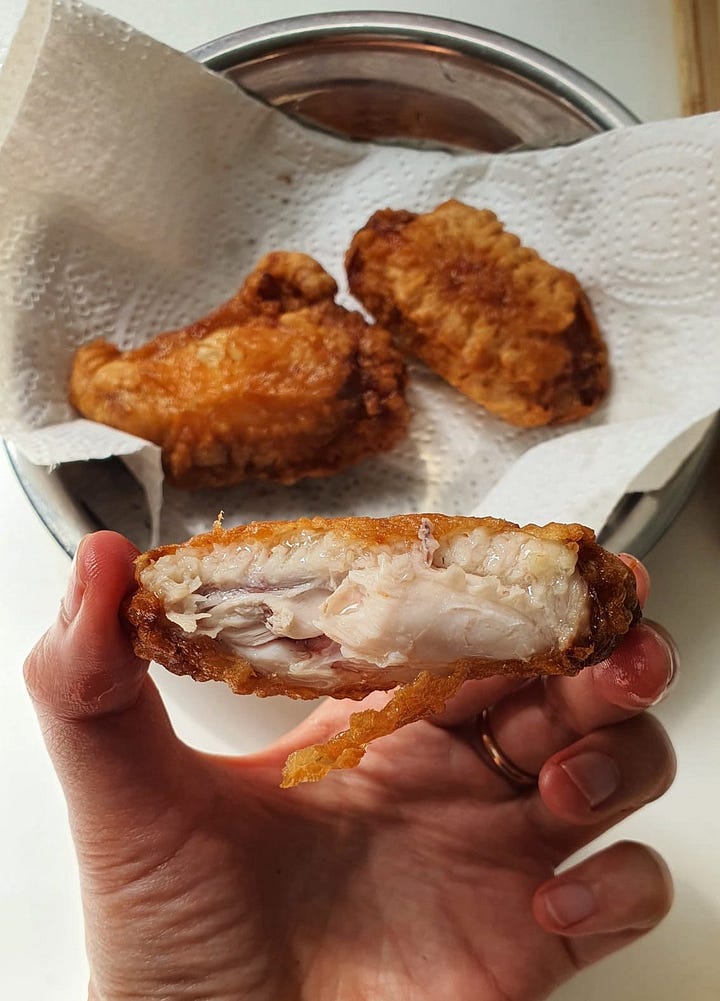
It was pretty perfect, but I wanted to see how far I could push it. This time, the wings had a discernibly thicker, more leathery crust which was not great.
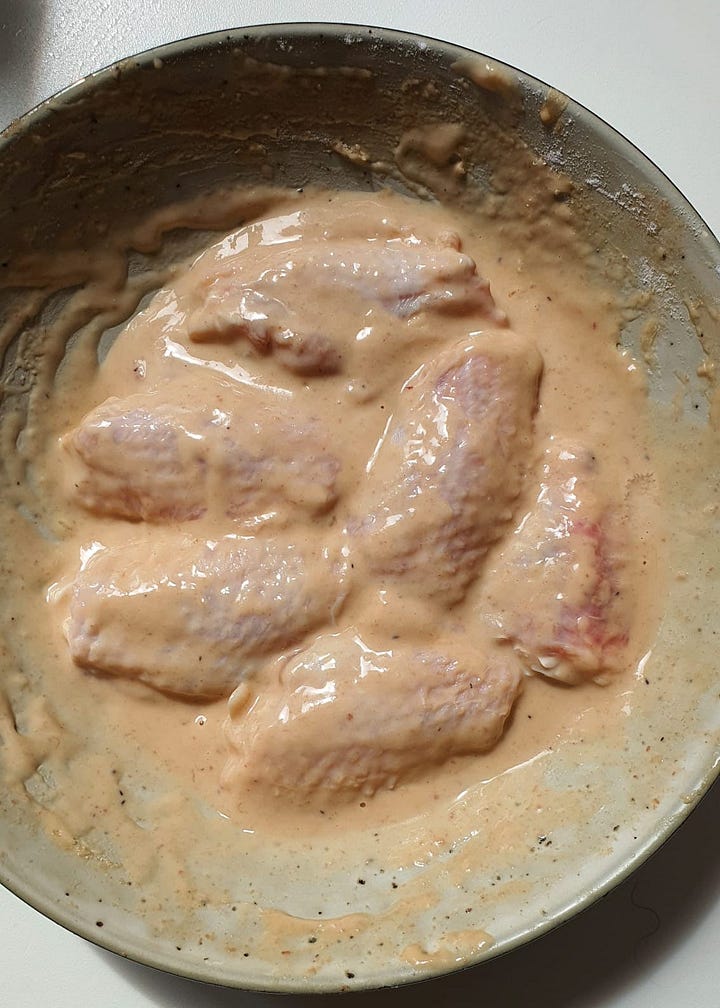

Now that I knew what the perfect consistency for harjeonggai batter was, I wanted to explore the use of other combinations of flour and starches. I came across a harjeonggai recipe from a Hong Kong chef who used a mix of plain flour, cornflour and wheat starch, which intrigued me. Wheat starch is traditionally used to make the translucent wrappers of hargau (shrimp dumplings), and works terrifically in the context of yam ring, which is deep-fried. I used a mix of plain flour, potato starch, and wheat starch in the batter and here are the results:
The batter was pretty close to perfection if you ask me. It was discernibly crisper and more brittle than the other iterations, almost crunching between the teeth like a potato chip. A little internet research brought up EVERCRISP, a “batter boost” that enhances the crispness of deep-fried foods. Its only ingredient, wheat dextrin, turns out to be a derivative of wheat starch.
But honestly, all the harjeonggai trials that we ate were great - if you placed all of them in a single heap on a lazy susan and served them with beer, nobody would be the wiser, which is a testament to what a great and forgiving dish harjeonggai is.
And if you’re a veg lover, I’m here to tell you that the marinade and harjeonggai batter works TERRIFICALLY with vegetables. We’ve prepared sweet potato slices this way in the past, and this time we used leftover batter to fry freshly harvested runner beans from our balcony garden. They brought to mind tempura with the lacy batter just clinging onto the beans, but with the unmistakable, umami kick of shrimp sauce. Vegetarian or live in an area where any form of fermented shrimp is obsolete? Not an issue. I’ve once mashed a cube or two of jarred fermented tofu into the batter as a substitute for shrimp sauce and it worked a treat.
Harjeonggai





